This article is provided by Bowdoin Bike School.
Learning how to ride a bike, whether you’re a kid or an adult, can be daunting. The fear of crashing and the accompanying humiliation can cause some of us to avoid undergoing this rite of passage. Of course, riding a bike is not really a vital skill that everyone must learn. It won’t prevent you from living a full, happy life.
That being said, without this particular skill, you may end up missing out on some grand adventures. Some places like Denmark are best toured on a bike. Mountain biking is also quite an enjoyable experience. We haven’t even touched upon how liberating it feels to use a bike as you travel. There’s nothing like the feel of the cool air on your face as you race down a busy road with the world around you flying by.
If you’re on a quest to master the art of riding (or planning on teaching the art to someone), you’re going to need to be prepared. Our in-depth guide should help you get started. Take note that everyone learns at his or her own pace. There’s no guarantee that you’ll ace this skill in a single afternoon. More importantly, everyone has a unique learning style which means that you or your beginner rider may respond to some methods but not to others. Make sure that you observe what methods work and adapt as needed.

Getting Ready to Ride
There’s a lot of things you need to do before you can get on that bike. We discuss each of these important steps below. You’ll note that these preparations are virtually the same whether the rider is a child or an adult. However, if you are teaching a child how to ride a bike, you should make sure that your child is ready to learn. Generally, kids between the ages of 3 to 6 years old are ready to learn. Their readiness will be dependent on their mental and physical development. In addition, you’ll need to check their comfort level. Humans are not hardwired to learn how to pedal, so don’t make them feel pressured into riding a bike. This should be a fun activity, not a chore.
Types of Bikes
Obviously, you don’t have a bike lying around just waiting for you to learn the art of riding it. You’re going to need to find a bike for you (or your student). There are different types of bikes available, ranging from road bikes to mountain bikes. We’ll discuss each of these a little to help you make your choice.
Road Bikes
These are designed for riding on smooth pavement. Compared to other bikes, road bikes usually feature smooth, skinny tires and “drop” handlebars. They’re light and can be used for on-road racing.
Mountain Bikes
These feature flat handlebars and wide knobby wheels, designed specifically to ride rough off-road trails. Most bikes of these types some type of suspension to absorb shock when you’re biking on rocky terrain.
Hybrid Bikes
Also known as comfort bikes, these feature a mashup of features from mountain and road bikes. They feature large, padded seats with upright handlebars for a comfortable riding position. In addition, hybrid bikes usually feature front suspension. You can ride these on paved and unpaved roads.
E-Bikes
Electronic bikes come in a variety of styles including road, mountain, commuter, and cargo. What they all have in common is the presence of a small, lightweight electric motor that helps the rider with pedaling.
Fat Bike
These bikes feature ultra-wide tires, ranging from 3.8 to 5 inches wide, hence the name. These “fat” tires help improve traction and flotation on soft terrain such as sand, loose soil, and packed snow.
Gravel/Adventure Bike
Similar to a road bike, an adventure bike features a classic drop handlebar. However, it also comes with large, knobby tires for riding on unpaved bike trails as well as mounts that allow you to add bottle cages or frame bags. In addition, adventure bikes has frame geometry that is more upright which makes it more comfortable to ride for longer periods of time (i.e. commuting to work or touring).
Touring Bikes
These bikes are quite similar to road bikes in design. However, instead of aluminum or carbon frames, touring bikes are generally made of steel frames for durability and adaptability. This makes it perfect for carrying heavy loads.
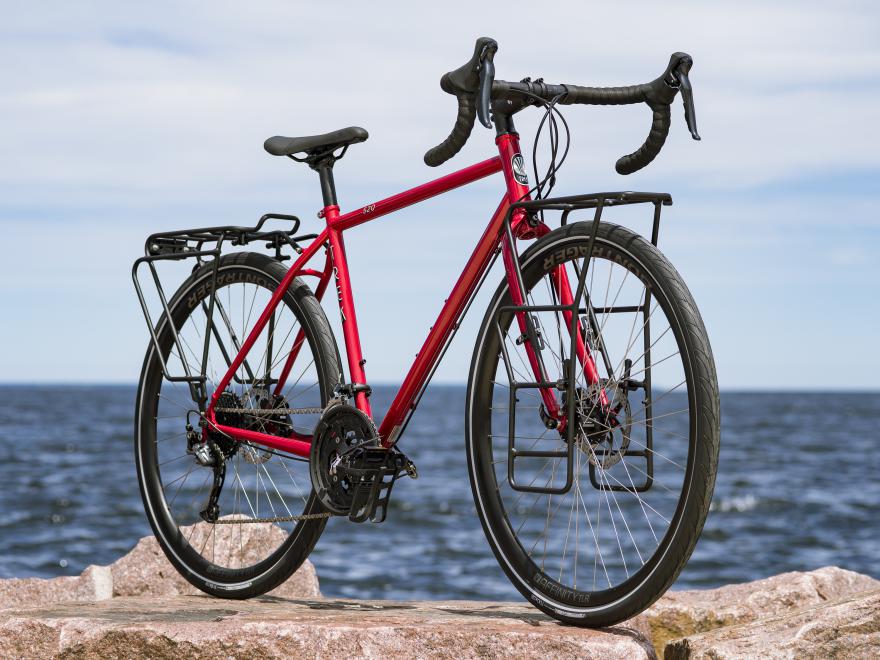
Cargo Bikes
As the name already suggests, this type of bike is best used for carrying loads or “cargo.” Cargo bikes usually have an elongated shape and a heavy frame design. They’re heavier and slower compared to other types of bikes. These bikes are perfect for transporting kids or running errands which is why they’re popular for urban cycling.
Recumbent Bikes
These are probably the most comfortable bikes you’ll find in the market. These feature a long, low design and a full-size seat that comes with a backrest. Because of the design, you can ride the bike in a reclined position, lessening the pressure placed on your knee joints, unlike with most other bike types. Take note that this bike type is not ideal for climbing and going down hills, even small ones.
Fixed Gear Bikes
Unlike your regular bikes, a fixed gear bike or a fixie features a single, fixed gear which means that you need to keep pedaling to keep the bike moving. You can’t coast or glide on this kind of bike. Compared to other bikes, this type is considerably lighter and allows for improved maneuverability. More importantly, they have a very simple design which makes them budget-friendly and easy to maintain.
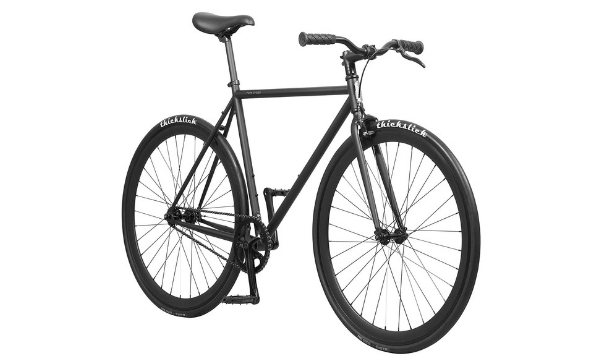
For more information on other specialized bike types, check out this guide.
Choosing the right bike
Now, the type of bike you choose will depend on the type of riding you plan to do and where you plan to ride. In short, the choice is really up to you. What you do need to make sure is that whatever bike you choose, it has to be the right size. When you’re buying for a child, don’t buy one that’s big thinking that they’ll grow into it. A bike is not a shoe or clothes. Getting them something that does not “fit” them properly can slow down the learning process. Worse, it can even prevent them from learning the skill altogether.
What is the correct fit? Whether you’re buying for an adult or a child, you need to choose a bike that will allow them to stand over the top tube with both feet planted firmly on the ground. This means that the top tube isn’t pressing on them at all while in this position. Why does this matter? Two reasons. One, the rider will feel comfortable and more in control of the bike at all times. Two, this will allow you to learn balancing and steering more easily (more on this later).
Aside from the size of the bike, you need to consider the reach to the handlebars. A proper fit means you’re able to reach the handlebars comfortably; your elbows should be slightly bent and leaning your torso doesn’t cause you any pain.
Safety
So, now that you’ve got a bike, the next thing on your list is safety which means a bike helmet. While you can forgo getting elbow and knee protection, a helmet is not something you can do without. Your head is your biggest asset and requires adequate protection if you’re going to be riding a bike.
When choosing a bike helmet, make sure that it sits level across the middle of your forehead. Its front edge should be 1-inch (or less) above your eyebrows. It should fit snugly on your head but not uncomfortably tight. When worn, the helmet should not shift noticeably when pushed side to side or front to back.
Here’s a tip: get a helmet that feels comfortable so you won’t dislike wearing it.
Check out this video to learn more about choosing the right bike helmet:
Aside from a helmet, you also need to make sure that you’re wearing comfortable clothes but not baggy ones. You don’t want to wear clothes that may get caught up on the bike’s gears or chains, causing you injury.
Where to Ride
Finding a good place to bike is as important as finding the right bike. If you bike in a heavily trafficked area, you’re bound to get into an accident, resulting in injury. Worse, it could cause you to stop learning how to ride a bike. A grassy area may seem like an ideal option, especially if you’re thinking about soft landings. However, it’s actually harder to pedal on soft grass than it is on smooth, flat pavement. In short, look for a location that’s traffic-free and has a large area that’s flat and paved. Some examples are a driveway, a park path, an empty parking lot, and an empty basketball court.
Preparing the Bike
The most important thing to learn when riding a bike is balance. Pedaling can be learned later. In order for a child to learn balance, you’ll need to prepare the bike (unless you’re using a balance bike).
- Remove the training wheels (if any). Training wheels can help kids learn how to sit on a bike and even pedal. But they don’t teach a kid how to balance on one.
- Remove the pedals and lower the seat. As we’ve mentioned earlier, pedaling will be a lesson learned later. Without the pedals, the rider will be able to easily sit upright on the bike with their legs straight and their feet flat on the ground.
- Inflate the bike tires. Tires must be inflated to the correct pressure to make the wheels roll more smoothly. This is important when the rider is scooting and coasting as he or she learns how to balance on the bike.
Things to Keep In Mind
Obviously, safety should be first and foremost on your mind. However, there are a few other things we think you should always remember while learning to ride a bike.
- Accept that you’re going to get hurt.
One of the most popular reasons why there are adults who don’t know how to bike is the fact that they’re afraid of getting hurt. Most likely this was due to a painful incident that occurred while they were learning how to bike during their childhood. While you can protect yourself from serious injury, you should accept that there will be times when you’re going to eat it. You’ll probably fall, get bruises or skin your knees. “Wiping out” is part of the learning process. Learning how to ride a bike is not easy. But you’ll get there.
- Just keep practicing.
That sounds lame but this is, in fact, the truest thing you’ll ever hear from any biking expert. It takes practice to get the hang of riding a vehicle of the two-wheeled variety. Every person is different, so don’t stress yourself if you’re not riding like an expert at the end of the day. Just keep on trying and you’ll get it eventually.
- Above all, have fun.
Learning how to ride a bike should not be a stressful experience, especially for a child. This is not a ride-or-die situation. It’s an I-want-to-be-able-to-experience-the-freedom-of-riding-a-bike situation. Pushing yourself or your student too hard during your lessons can slow them down or even cause them to stop wanting to learn altogether.
Learning How to Balance:
Practice getting on and off
Sounds stupid but it’s a necessary step. This is especially true if the rider is quite young. Just like learning to ride a skateboard for the first time, you have to take the time to feel comfortable getting on and off the bike. Make sure it doesn’t wobble or roll as you’re mounting. You can also practice applying the brakes when you’re in the process of getting on and off the bike.
Scooting and Gliding/Coasting
Once you’re comfortable mounting and dismounting the bike, the next step is to begin scooting. Scooting on the bike with your feet helps you learn the feel of balancing on two wheels. When you’re adept at scooting, try gliding or coasting on the bike. Try to get both feet off the ground, with legs outstretched, as long as you can while maintaining balance. When you can coast on the bike without putting your feet down to correct the balance of the bike, you’re ready to learn steering and turning.
Steering and Turning
Once you’ve mastered how to balance the bike while gliding, it’s time to move on to steering. After all, you’re not going to be riding the bike in a straight line all the time. Start out with the easy stuff like big, looping turns. Make sure that you focus on what’s ahead and direct the bike where you want it to go. You can practice steering by placing safety cones or similar obstacles in a pattern.
Riding with Pedals:
To make sure that you are ready to pedal, you need to be able to do the following:
- Balance the bike while gliding
- Make turns
- Look ahead while riding
When you’ve mastered these three things, you can move on to pedaling. For this step, make sure that your seat remains in the lowest position. This way, you can use your feet to stop the bike from moving when needed.
Pedaling the Bike
To pedal, start with one foot flat on the ground while the other is on the pedal which is placed at the two o’clock position. Push down on the front pedal to get forward momentum. As you move forward, put your other foot on the pedal and keep going. The faster you pedal, the easier it is to stay balanced on the bike.
If you’re teaching your child, keep him or her steady by placing a hand on their shoulder or on the seat of the bike from behind. Avoid holding the handlebars and the saddle from the side because you’ll affect how the bike will lean, making it more difficult for your child to achieve his balance.
Steering and Turning
As we’ve already mentioned, practice makes perfect. This means steering the bike while you pedal, taking turns and making figure 8’s. Just like before, you can use safety cones or similar objects to create a pattern that you can practice navigating through. Change the patterns to help you master the ability of steering while pedaling.
Braking
Now, some experts recommend learning how to apply the brake before you even start riding a bike. You can do this by walking beside your bike and then pulling on the brakes. The advantage of this is that it helps you learn how much pressure you need to apply in order to activate the brakes and effectively stop the bike.
Other experts believe it’s easier to learn after you’ve mastered the skill of pedaling. You can start learning how to apply the brakes by gently pressing on it until you can use it without causing the bike to wobble. You can even make a game of it to keep yourself from getting bored. Find a designated point and try to stop the bike completely before reaching it.
When you’ve developed enough confidence in steering, pedaling, and braking, you can move your seat up to its proper position, leaving your knees only slightly bent when pedaling (around 80% to 90% straight). Afterwards, just keep on practicing. Find a bike friend to keep you company. Bike as much as you can. Going to the store? Ride the bike. Visiting a family member or a friend? Take your bike. The more you practice, the more it becomes muscle memory, the more confident you become.
Training Videos
While our guide is very in-depth, you might want some visuals to go along with our instructions. Below are two informative videos on how to teach a child and an adult to ride a bike:
Biking Equipment
If you’re new to biking, you already know the two most important things you need to get – a bike and a helmet. But what comes afterwards? Truthfully, you don’t really need anything else when it comes to cycling. There are, of course, some things that can make your ride more comfortable and enjoyable. We’ve listed them down below in order of importance.
Bike Locks
You can’t leave your bike on the street and expect it to still be there when you come back. If you want to keep it away from light fingers, you’re going to need a bike lock. Like most other products, you get what you pay for with bike locks. Really good ones don’t come cheap.
Cycling Backpacks
Cycling backpacks are not your ordinary backpack. These bags are designed specifically to distribute the weight of the load on your back. It also ensures that the load doesn’t move around while you’re biking. Another important feature of a cycling backpack is that it is breathable. Biking is sweaty work which means you don’t want to get your back soaked with sweat just because your backpack covers it like a wool blanket. If you’re planning on bringing stuff with you on your bike, this is definitely a must-have.
Cycling Gloves
We’ve already mentioned that there will be times when you’ll injure yourself while biking. One way to protect yourself is to wear a helmet. Cycling gloves offer a different kind of protection. These can help protect your hands when you fall and keeps them dry, allowing you to better grip the handlebars. You can even use them to keep your hand warm during the colder months. For serious bikers, cycling gloves can also be used to wipe their nose when it starts running.
Bike Pumps
You can’t keep your bike’s tires at the correct pressure if you don’t have a bike pump. Naturally, there will also be times when you’ll experience a flat tire, either on the road or after a long time in storage. You can’t really predict when it’ll happen, so it’s important to be prepared. That means having a bike pump on hand. It’s definitely more convenient and cheaper than calling for a lift home and getting your tires fixed by a professional.
Water Bottle and Bottle Cage
Riding a bike can be thirsty work, especially if you’re doing it in the heat of summer. You’ll need to keep yourself hydrated which means bringing water with you wherever you go. Now, you can easily put a bottle of water in your bag but that won’t give you easy access. Fitting a bottle cage on your bike’s frame along with a water bottle will enable you to keep biking while on the move.



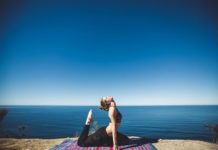
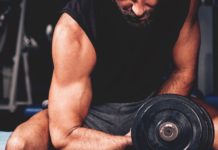
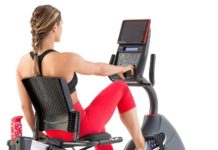
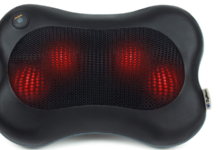






![Best Crochet Hooks for Beginners and Pros [2020 Update] best crochet books](https://www.awebtoknow.com/wp-content/uploads/2018/01/best-crochet-books-100x70.jpg)


